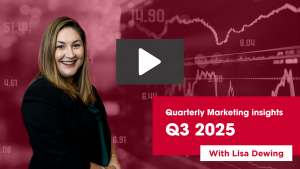
Minimizing taxes is a pivotal component of effective financial planning, especially for high-income earners. By implementing strategic approaches, you can minimize your taxable income and enhance wealth accumulation. Here are several strategies to consider:
- Maximize Contributions to Tax-Advantaged Retirement Accounts
Contributing to retirement accounts such as pre-tax 401(k)s and Traditional IRAs allows you to defer taxes on your income. After-tax Roth contributions don’t save on taxes now but enjoy tax-free compounded growth and tax-free withdrawals in retirement. For 2025, contribution limits have increased, enabling you to save more in these tax advantaged investment vehicles.
- Utilize Health Savings Accounts (HSAs)
Contributing to an HSA offers triple tax advantages: contributions are tax-deductible, growth is tax-free, and qualified medical expenses can be paid tax-free, including for Medicare premiums in retirement. This makes HSAs a powerful tool for managing healthcare costs and reducing taxable income. While enrollment in a high-deductible health insurance plan is required to be eligible to contribute to an HSA, the premium and tax savings on these plans may save a lot in the long-term.
- Engage in Charitable Giving
Donating to qualified charitable organizations can provide significant tax deductions. To maximize the benefit, consider donating appreciated assets, such as stocks, which allows you to deduct the fair market value without incurring capital gains tax. If you are over age 70 ½, you can utilize a Qualified Charitable Distribution (QCD) from your IRA to utilize tax-free distributions from your IRA directly to a charity.
- Utilize Tax-Efficient Investments
Inefficient asset allocation in taxable investment accounts can hurt portfolio total returns. Consider more tax efficient vehicles like ETFs over mutual funds, or tax-free municipal bonds over corporate bonds. Be aware of net investment income tax for individuals earning over $200,000 or married couples earning over $250,000.
- Consider a Roth Conversion
Converting a Traditional IRA to a Roth IRA involves paying taxes on the converted amount now but allows for tax-free growth and withdrawals in the future. This strategy can be advantageous if you anticipate being in a higher tax bracket during retirement.
- Leverage 529 ABLE and Education Plans
Contributions to Section 529 plans grow tax-free, and withdrawals for qualified expenses are also tax-free. Some states offer tax deductions or credits for contributions, making this a valuable tool for funding education while reducing taxable income. 529 Education plans are used for education expenses and 529A ABLE accounts are used for the living expenses of a disabled person, including for deaf people.
- Utilize Flexible Spending Accounts (FSAs)
FSAs allow you to set aside pre-tax dollars for qualified healthcare and dependent care expenses. By contributing to an FSA, you reduce your taxable income while covering necessary expenses.
- Implement Tax-Loss Harvesting
Offset capital gains by realizing losses on underperforming investments. This strategy can reduce your taxable income and improve the tax efficiency of your investment portfolio, especially during periods of market volatility.
Implementing these strategies requires careful planning and consideration of your individual financial situation. Consulting with a financial advisor or tax professional can help tailor these approaches to your specific needs, ensuring that you maximize your tax-free income effectively. We’re here to talk – schedule a consultation today.
Image Description: The image features the bold text “MAXIMIZING TAX-FREE INCOME” in red capital letters, followed by “Strategies For High-Income Earners” in smaller black text. The background includes a calculator, a pen, and a red folder on a white surface.





